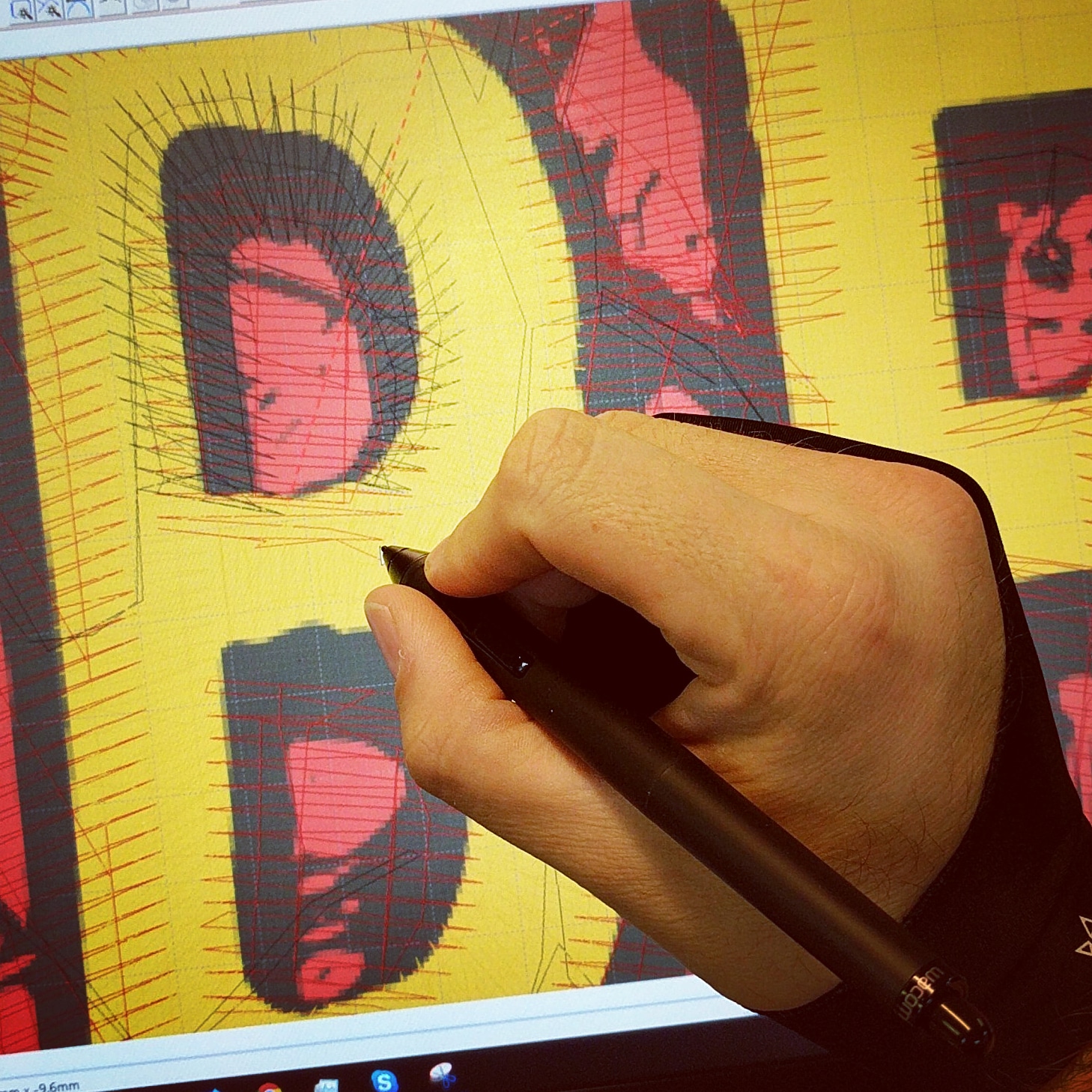Economical Digitizing for Embroidery: Accuracy and Detail
Economical Digitizing for Embroidery: Accuracy and Detail
Blog Article
Streamlining the Art of Needlework Digitizing: Step-by-Step Guide
As technology proceeds to development, the digitization procedure has actually ended up being more obtainable, enabling fanatics to bring their elaborate layouts to life with convenience. In this guide, we will certainly decipher the intricacies of embroidery digitizing, damaging down each step carefully to enhance the process and equip both newbies and experienced embroiderers alike.
Comprehending Needlework Digitizing Software
Needlework digitizing software application functions as an important tool for changing detailed styles right into digital formats compatible with embroidery makers, assisting in precise sewing and customization. This specific software application permits customers to import different photo file layouts, such as JPG or PNG, and transform them right into needlework machine-readable layouts like DST, EXP, or PES - Digitizing for Embroidery. By utilizing functions like stitch editing and enhancing, underlay choices, and string color option, digitizing software allows individuals to regulate every facet of the layout process
Additionally, progressed embroidery digitizing software uses devices for creating intricate layouts, adjusting stitch density, and integrating intricate details. Customers can likewise preview the design before stitching it out, making certain precision and minimizing errors. Furthermore, lots of software application programs supply automatic functions that assist streamline the digitizing procedure, saving effort and time.
Understanding the abilities of embroidery digitizing software is crucial for attaining high-quality lead to needlework tasks. By mastering this tool, embroidery fanatics and professionals can unleash their creative thinking and bring detailed layouts to life with precision and performance.

Picking the Right Design Documents
After acquainting yourself with the capabilities of embroidery digitizing software program, the following critical action in the process is selecting the appropriate style apply for your job. Digitizing for Embroidery. When selecting a style apply for needlework digitizing, it's vital to think about the complexity of the style, the dimension of the end product, and the sort of fabric you will certainly be collaborating with
For complex layouts with great details, a high-resolution image or vector documents is suggested to make sure that the embroidery maker can accurately replicate the style. Additionally, the dimension of the end product plays a substantial function in selecting the appropriate layout file. Larger designs may call for higher resolution documents to preserve clarity and sharpness.
Furthermore, the kind of fabric you will be stitching on influences the option of layout data. Different materials might call for modifications in the layout documents to guarantee that the stitches are effectively straightened and the layout appears as meant. By carefully choosing the best design data based upon these variables, you can set on your own up for a successful embroidery digitizing process.
Digitizing Devices and Strategies
Making use of specialized software and precision methods, digitizing devices are necessary in changing complex designs into embroidery-ready data. Needlework digitizing software program, such as Wilcom, Hatch, or Embrilliance, offers the needed system to transform art work right into stitch information. These programs supply features like stitch modifying, padding options, and lettering devices to ensure the design translates perfectly onto material.
One of the essential strategies in digitizing is creating a clear course for the needlework machine to adhere to. This entails digitizing each component of the layout with accuracy, determining stitch types, thickness, and instructions. By making use look at this website of devices like digitizing tablets or software-specific plugins, embroiderers can accomplish a high level of accuracy in their digitized designs.
Additionally, understanding the art of padding sewing is critical for creating quality needlework. Underlay sewing supports the material and creates a structure for the layout, making sure that the final product is both aesthetically enticing and durable. By recognizing these digitizing devices and techniques, embroiderers can raise their craft and bring elaborate designs to life with accuracy and effectiveness.
Customizing Stitch Kinds and Instructions
The choice of stitch types can significantly influence the general look and structure of the embroidered layout. By tactically combining these stitch types, embroiderers can attain depth and dimension in their layouts.
Furthermore, the instructions of stitches plays a crucial duty in improving the aesthetic allure of the last needlework. By trying out with various stitch angles and patterns, my blog embroiderers can bring their layouts to life with impressive detail and details.
Screening and Refining Your Digitized Design
To guarantee the precision and high quality of your digitized layout, complete testing and refinement are essential action in the embroidery digitizing process. As soon as you have actually finished the digitization of your style, it is essential to evaluate it before proceeding with the actual needlework. Checking enables you to identify any prospective concerns such as thread breaks, stitch thickness issues, or design distortions that may influence the result.

After screening, it is necessary to fine-tune your digitized design based on the comments from the test sew-out. This may include tweaking stitch setups, changing densities, or making changes to the overall design to accomplish the desired outcome. By repeating with testing and improvement, you can tweak your digitized design to excellence prior to progressing with the actual embroidery procedure.
Final Thought
In conclusion, mastering the art of needlework digitizing needs a complete understanding of the software, picking the best layout file, making use of digitizing tools and techniques, customizing stitch types and instructions, and screening and refining the digitized layout. By following these steps, embroiderers can streamline the digitizing process and produce premium embroidered styles with view publisher site precision and performance.
Report this page